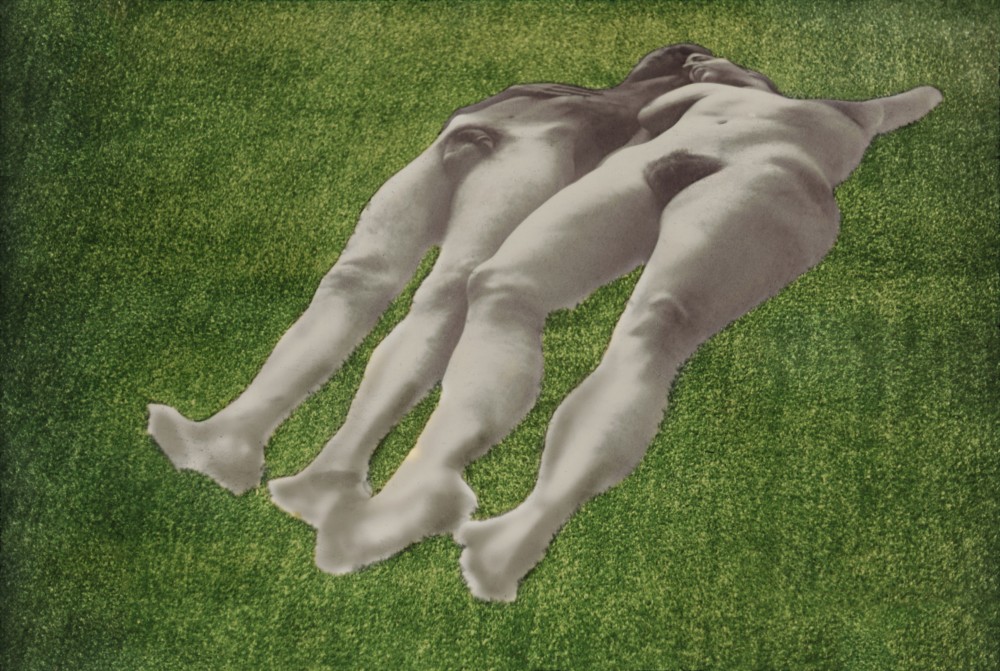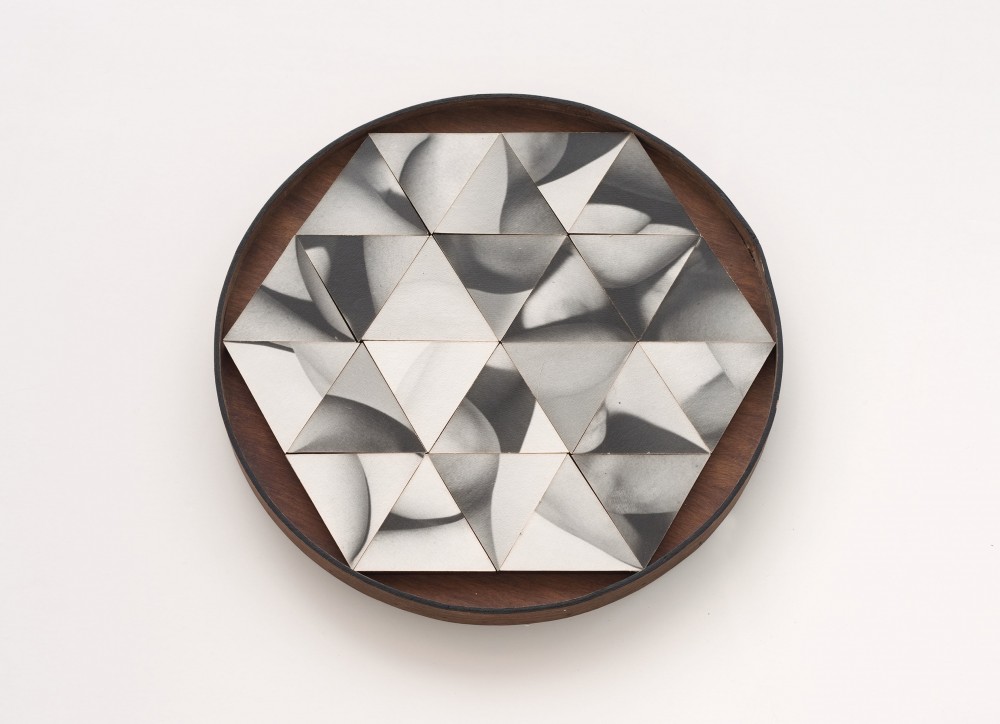In April 1970, Peter Bunnell, then curator at the Museum of Modern Art, organized Photography into Sculpture, an exhibition of recently formed experimental objects incorporating photographic processes. The show reached a wide audience, traveling for two years and appearing in eight venues across the United States and Canada. Today, selections from Bunnell’s exhibition accompanied by related works from the period are on display at Hauser and Wirth under the heading The Photographic Object, 1970.

Installation view, ‘The Photographic Object, 1970’, Hauser & Wirth New York, 69th Street, 2014, Courtesy the artists and Hauser & Wirth, Photo: Genevieve Hanson
Bunnell’s show was significant for its emphasis on photographic work that abandoned the gallery wall as support. This aspect of the show is immediately felt at Hauser and Wirth as the majority of pieces appear on podiums, in vitrines, or as installations. Perhaps the most dramatic example is Ellen Brooks’ Untitled (Lawn Couple), to which an entire room is dedicated. An enlarged version of Brooks’ Flats, which greet visitors entering the gallery, the installation consists of a twelve-foot square of astroturf upon which sprawls a life-scale nude couple printed on canvas.

Ellen Brooks, Untitled (Lawn Couple), 1970, Silver print on photo linen, shaped, Astro Turf, 114 x 366 x 366 cm / 44 7/8 x 144 1/8 x 144 1/8 in, © Ellen Brooks, Photo: Ellen Brooks
Four objects by Robert Heinecken, whose work is currently being featured in a retrospective at MoMA, do well to reflect the influential UCLA teacher’s commitment to exploring photographic possibilities beyond conventional practice. Heinecken’s fragmentation and reassembly of photographs mounted on wooden supports challenge formalist dictum that had hitherto defined the medium. Materiality is a central theme of the show and an enthusiasm for all things plastic pervades the space. Nevertheless, the uses to which plastic media are deployed vary. Jack Dale’s layered glass and Plexiglas figure studies extend Cubist experimentations in perception into three-dimensional space. On the other end of the spectrum, Michael Stone’s photographs appropriated from the mass media and displayed as packaged commodities introduce a Pop Art sensibility and politics.

Robert Heinecken, Multiple Solution Puzzle, 1965, Twenty-four gelatin silver prints on 2-inch wood squares with wood base, 28.58 x 28.58 x 2.54 cm / 11 1/4 x 11 1/4 x 1 in, Courtesy Cherry and Martin, Photo: Bryan Forrest
The Photographic Object, 1970 appears at a moment when nostalgia for past exhibitions has become an increasingly popular trend among galleries and museums. The show at Hauser and Wirth serves as the second resurrection of Photography into Sculpture in recent years. In 2011, a similar recreation appeared at Cherry and Martin in Los Angeles. With such a short turnaround, the privileged significance of this particular body of work invites scrutiny. The radicality of Bunnell’s show in 1970 can hardly be overstated. However, nearly forty-five years of photographic experimentation later, the works included in the show begin to show their age. With analogue processes becoming an increasingly fetishized novelty and 3-D printing technologies opening previously unimaginable sculptural possibilities, much of the work included in the show has lost its original bite. Nevertheless, the exhibition deserves a visit in order to appreciate the many avenues traveled by artists at this pivotal moment of photographic experimentation. The show will be followed by a publication edited by Mary Statzer in the fall.
Text by Cory Rice

